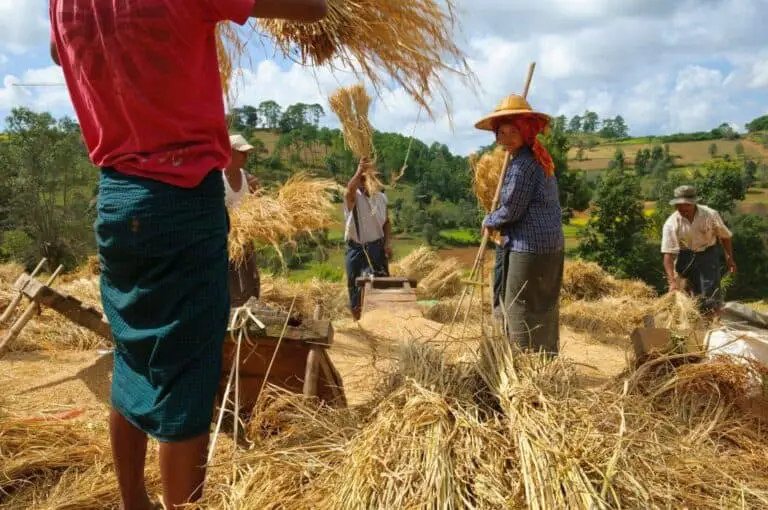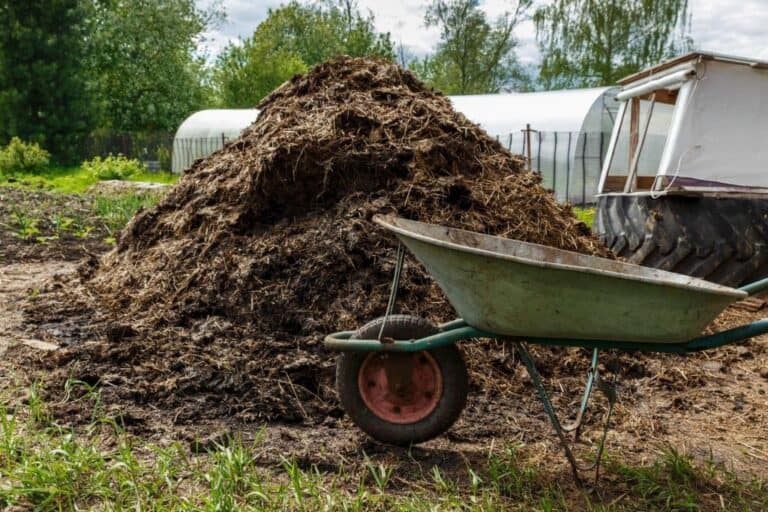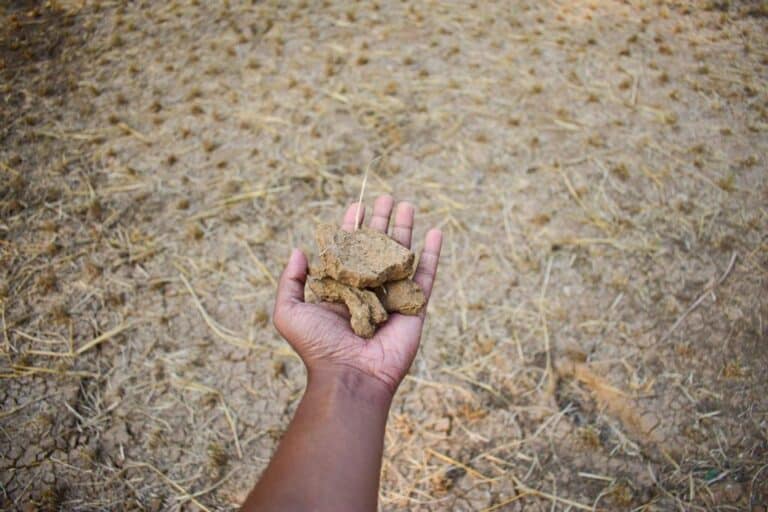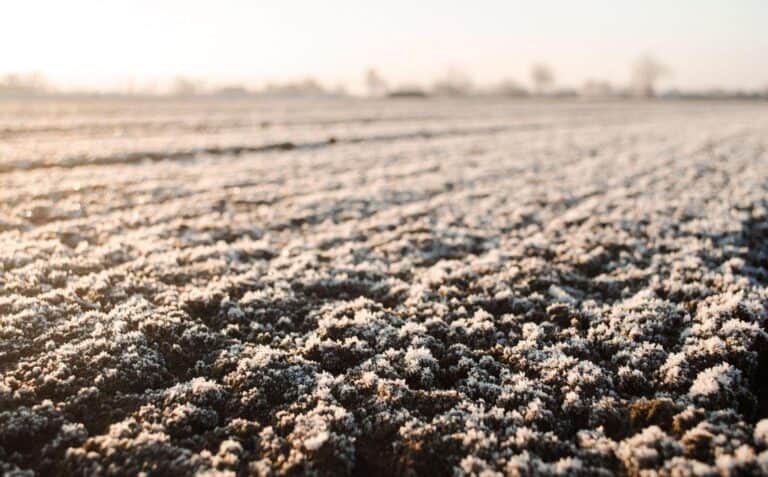Topsoil or Compost for Lawn Grass Seed: Which One is Better?
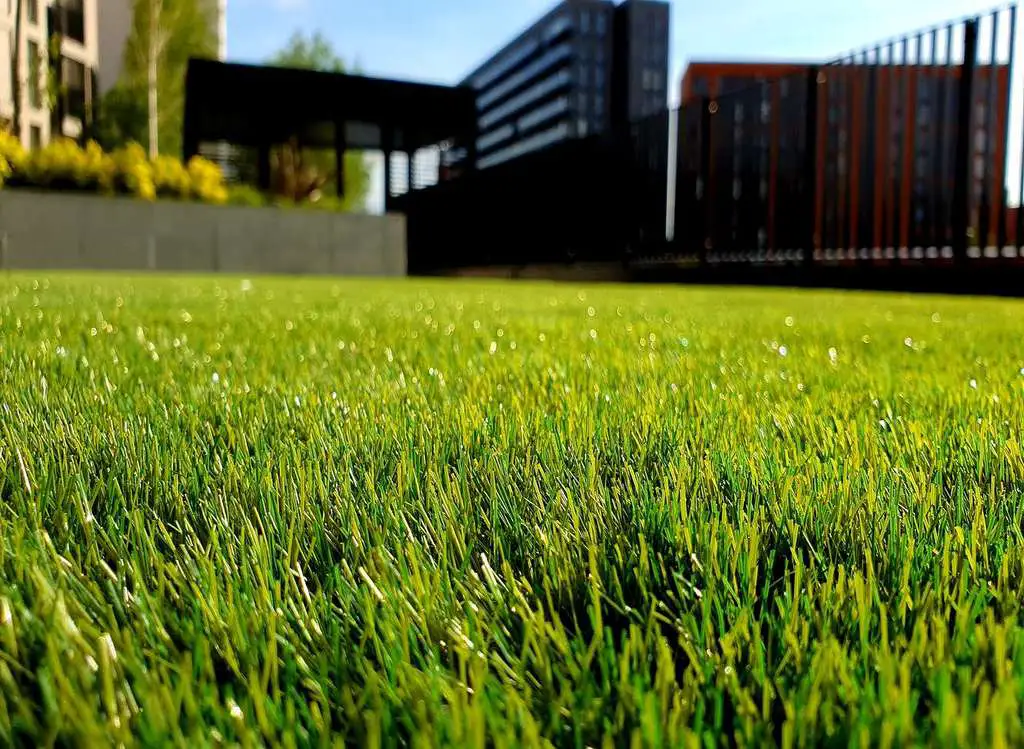
When it comes to nurturing a lush, vibrant lawn, choosing the right soil amendment can make all the difference. Successful lawn grass seed growth depends on a variety of factors, with soil amendment being a critical one. Should you go for dependable topsoil or opt for eco-friendly compost to nurture your lawn?
Welcome to the world of lawn care, where choosing the right soil amendment can make all the difference. In this guide, we’ll embark on a journey to unravel the age-old question: Which is better for your lawn grass seed, topsoil, or compost?
We will delve into the world of topsoil and compost, two common soil amendments, to help you determine which one is better suited for your lawn. We’ll explore their compositions, their impact on grass seed germination, and weigh the pros and cons of each. So, let’s dive in and discover the best choice for your green haven.
Introduction to the Importance of Soil Amendment
Before we dig deep into the world of topsoil and compost, it’s essential to understand why soil amendment matters in the realm of grass seed growth. You might be wondering, “Why not just sow the seeds directly?” Well, soil amendment plays a crucial role in ensuring your grass thrives.
Soil amendment matters because it transforms ordinary soil into a fertile, nurturing environment for your grass seeds. It’s like providing the perfect home for your new green residents. Here’s why it’s indispensable:
1. Nutrient Boost: Grass seeds require a balanced diet of nutrients to sprout and thrive. Soil amendment, whether through topsoil or compost, enriches the soil with essential elements like nitrogen, phosphorus, and potassium. These nutrients are the building blocks for healthy grass growth, ensuring your lawn starts on the right foot.
2. Improved Soil Structure: Think of soil amendment as a makeover for your lawn’s foundation. It enhances soil structure, making it crumbly and well-aerated. This improved structure allows the grass roots to penetrate the soil with ease, accessing both nutrients and moisture, setting the stage for robust growth.
3. Moisture Retention: Amended soil has the remarkable ability to retain moisture, preventing your grass from drying out during hot spells. It’s like a built-in hydration system for your lawn, ensuring that your grass has a consistent water supply to stay green and healthy.
Understanding Topsoil
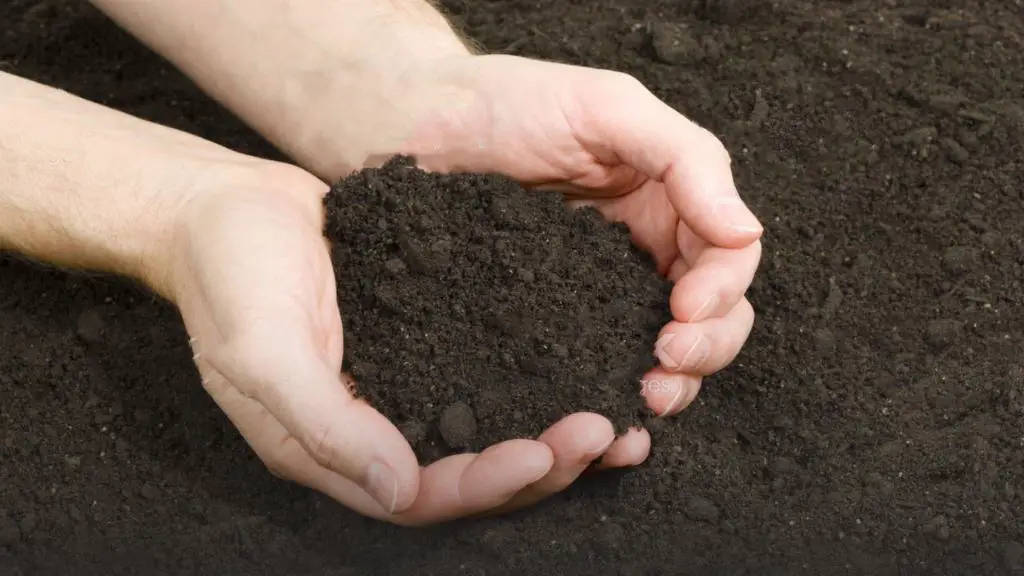
Topsoil refers to the uppermost layer of soil, typically the top 5-10 inches, which is rich in organic matter, nutrients, and microorganisms. It’s a fertile haven for plant growth and serves as the foundation for your lawn.
Good quality topsoil possesses several key characteristics, and understanding them is essential for cultivating a thriving lawn:
- Texture: Topsoil boasts a balanced texture, striking the perfect equilibrium between sand, silt, and clay. This balance facilitates adequate water drainage, preventing your lawn from becoming waterlogged, while also ensuring that the roots have the necessary aeration to flourish.
- Color: The color of good quality topsoil can vary, but generally, topsoil should be a dark brown or almost black color. Darker shades indicate a high level of organic matter, which is beneficial for soil fertility and texture.
- Nutrient-Rich: It’s like a nutrient buffet for your grass. High-quality topsoil is a treasure trove of essential plant nutrients. Nitrogen, phosphorus, potassium, and a host of micronutrients are readily available, giving your grass the nourishment it needs to grow strong and healthy.
- pH Level: The pH level of good topsoil hovers around neutral, typically between 6.5 and 7.0. This pH sweet spot is ideal for most grass types, as it ensures that your lawn’s soil is neither too acidic nor too alkaline, creating the perfect conditions for robust growth.
- Microbial Activity: Healthy topsoil teems with beneficial microorganisms. These tiny, unseen workers break down organic matter, further enriching the soil and promoting nutrient cycling. The result? A thriving ecosystem beneath your lawn’s surface.
- Organic Matter: Good topsoil contains a healthy dose of organic matter, often in the form of decomposed plant material. This organic matter enhances soil structure, fosters water retention, and provides a hospitable environment for beneficial soil organisms.
Topsoil provides an optimal environment for grass seed germination:
- Nutrient Supply: The rich nutrient content promotes robust seedling growth.
- Moisture Retention: Topsoil retains moisture, preventing seeds from drying out.
- Root Support: Its loose texture allows roots to penetrate and establish themselves.
Understanding Compost
Compost is the result of decomposed organic matter, such as kitchen scraps and yard waste. This natural fertilizer is renowned for its ability to enhance soil quality.
Using compost in lawn grass seed planting offers numerous advantages:
- Organic Nutrients: Compost releases nutrients slowly, nourishing plants over time.
- Microbial Activity: It fosters beneficial microbial activity, improving soil structure.
- Moisture Regulation: Compost helps soil retain moisture evenly.
Compost enriches the soil by:
- Adding Organic Matter: It increases soil organic matter, enhancing its overall quality.
- Improving Soil Structure: Compost creates a crumbly texture, improving root penetration.
- Balancing pH: Compost can help neutralize overly acidic or alkaline soils.
Comparing Topsoil and Compost
Now that we’ve gained insights into the individual characteristics of topsoil and compost, let’s put them side by side for a comprehensive comparison:
| Aspect | Topsoil | Compost |
| Composition | Mineral-rich with organic matter | Decomposed organic matter |
| Nutrient Content | Contains essential minerals | Slow-release organic nutrients |
| pH Level | Neutral to slightly acidic | Can vary based on source materials |
| Water Retention | Moderate | Excellent |
| Soil Structure | Loose, well-aerated | Improves soil structure over time |
| Microbial Activity | Supports existing microorganisms | Enhances microbial diversity |
Pros and Cons of Using Each for Lawn Grass Seed
Topsoil brings the goods with its nutrient-packed punch, laying a robust foundation for your grass seeds to call home. Think of it as your lawn’s secret sauce, holding moisture and fending off erosion like a champ. Plus, it’s a natural leveler, making your lawn look smoother than a fresh layer of frosting on a cake.
But, hold up, there’s a flip side. Topsoil might dent your wallet a bit and flex your muscles since hauling it around isn’t exactly a walk in the park. Now, let’s talk compost. It’s like your lawn’s personal nutritionist, loaded with organic goodness that’ll supercharge your grass growth without the need for chemical boosts. It’s also an eco-warrior, recycling kitchen scraps and green waste into gold for your garden.
Below is a summary of the pros and cons of using topsoil and compost for your lawn’s grass seed. The choice is yours to meet your needs.
Topsoil Pros:
- Provides immediate nutrient supply.
- Suitable for amending poor-quality soil.
- Stable pH level.
Topsoil Cons:
- Limited organic matter.
- May need additional nutrients over time.
- Risk of compaction in heavy soils.
Compost Pros:
- Slow-release of nutrients.
- Enhances microbial activity.
- Improves soil structure.
Compost Cons:
- Varying pH levels based on source materials.
- May require more time to see results.
- Potential for nutrient imbalances if used excessively.
More: Topsoil or Compost for Vegetable Garden: Which One is Better?
When to Use Topsoil for Lawn Grass Seed
So, when does topsoil emerge as the preferred choice for your lawn grass seed planting endeavors? Let’s explore some scenarios where topsoil shines and learn how to apply it effectively.
Preferred Scenarios for Topsoil Usage
- Soil Deficiency: When your existing soil lacks essential nutrients or is poor in quality, topsoil becomes your go-to solution. It acts as a nutrient booster, providing an immediate source of nourishment for your grass seeds.
- Leveling Uneven Ground: If your lawn area has uneven terrain or depressions, topsoil can be used to level the surface. A uniform, flat base allows for consistent grass growth.
- Improving Drainage: In areas prone to waterlogging, topsoil with good drainage properties helps prevent oversaturation, ensuring the roots don’t suffocate due to excessive moisture.
- Enhancing Soil Structure: Topsoil’s loose texture improves soil structure, allowing grass roots to penetrate and establish themselves with ease.
Applying Topsoil Effectively
When using topsoil, follow these steps for successful grass seed planting:
- Test Your Soil: Before applying topsoil, it’s wise to conduct a soil test. This will help you determine nutrient deficiencies and pH levels, enabling you to choose the right topsoil blend.
- Prepare the Area: Clear the lawn area of debris, rocks, and weeds. Ensure it’s clean and ready for soil amendment.
- Spread Topsoil: Evenly spread a layer of topsoil over the prepared area. The ideal depth typically ranges between 2 and 4 inches, depending on soil quality and needs.
- Mix and Grade: Mix the topsoil with the existing soil and grade it to ensure a smooth and level surface.
- Seed Sowing: Once your soil is prepped, sow your grass seeds following the recommended seeding rate and depth.
- Watering: Water the newly planted seeds gently to avoid displacement and maintain consistent moisture levels for germination.
Topsoil or Compost for Lawn Grass Seed: Which One is Better?
When it comes to using topsoil or compost for lawn grass seed, the answer depends on your specific needs and goals. Ultimately, whether to use topsoil or compost (or a combination of the two) depends on your specific needs and goals.
If you’re trying to grow a thick, lush carpet of grass, both topsoil and compost can be effective. If you’re concerned about weed seeds or chemicals, you may want to opt for compost. If you’re concerned about anchoring the grass, you may want to opt for topsoil.
When to Use Compost for Lawn Grass Seed
Compost, as a versatile soil amendment, excels in specific situations. Let’s explore scenarios where compost takes the lead and how to incorporate it for optimal grass seed growth.
Recommended Scenarios for Compost Usage
- Soil Enrichment: When you’re looking to improve the overall health and structure of your soil, compost is the natural choice. It gradually releases nutrients, fostering long-term soil fertility.
- Organic Gardening: If you’re inclined towards organic gardening practices, compost aligns perfectly with your goals. It’s an organic matter powerhouse, supporting a thriving ecosystem in your soil.
- Soil pH Adjustment: Compost can help balance pH levels in your soil. This is especially useful when dealing with soils that are either too acidic or too alkaline.
- Enhancing Microbial Activity: Compost is teeming with beneficial microorganisms. Using it enhances microbial diversity in the soil, promoting nutrient cycling and healthier grass growth.
Incorporating Compost Effectively
To make the most of compost in your lawn grass seed planting, follow these instructions:
- Assess Soil Needs: Start by assessing your soil’s condition and needs. Conduct a soil test if necessary to determine its pH and nutrient status.
- Prepare the Area: Clear the lawn area of any debris, rocks, and weeds. Ensure it’s clean and ready for soil enhancement.
- Spread Compost: Apply a layer of compost evenly over the designated area. The recommended depth usually ranges from 1 to 3 inches.
- Incorporate Compost: Gently mix the compost with the existing soil to ensure an even distribution of organic matter and nutrients.
- Seed Sowing: Once the soil is amended with compost, proceed to sow your grass seeds at the appropriate depth and rate.
- Watering: Water the newly planted seeds consistently to facilitate germination and support healthy root development.
Which is Better as a Soil Amendment: Compost or Humus?
Both compost and humus are beneficial soil amendments that can improve soil fertility and texture. However, they differ in their composition and how they are used.
Here are some factors to consider when choosing between compost and humus:
Compost:
- Compost is a good source of nutrients and organic matter that can improve soil fertility and texture.
- It acts as a slow-release fertilizer, releasing nutrients over time.
- Compost is relatively easy to make at home using food scraps, yard waste, and manure.
- It can be applied annually to maintain a fertile, spongey topsoil layer that resists compaction and invites beneficial organisms.
Humus:
- Humus is the end result of the decomposition process and is a dark, organic, mostly carbon-based, spongy material that is rich in organic matter.
- It can improve soil structure, water-holding capacity, and nutrient availability.
- Humus is not readily available as a soil amendment, and the only way to add humus to soil is to add compost and wait for it to decompose.
- Humus plays an important role in sustainable soil improvement, but it’s impossible to find pure humus as a soil amendment.
Both compost and humus are beneficial soil amendments, but they serve different purposes. Compost is a good source of nutrients and organic matter that can improve soil fertility and texture, while humus can improve soil structure, water-holding capacity, and nutrient availability. If you’re looking for a quick boost in soil fertility, compost may be the better option, while if you’re looking for long-term soil improvement, humus may be the better option.
Preparing the Soil for Grass Seed Planting
Before diving into the exciting world of seeding, it’s crucial to lay the foundation with proper soil preparation. This is a vital step whether you choose topsoil or compost as your soil amendment.
Soil preparation is the bedrock of successful lawn grass seed planting. Here’s why it’s so important:
- Weed Control: Clearing the area of weeds and debris prevents competition for resources with your grass seeds.
- Even Growth: Leveling the soil surface ensures uniform growth and mowing.
- Root Development: Well-prepared soil allows for optimal root development, promoting healthy, robust grass.
Steps for Soil Preparation
Whether you opt for topsoil or compost, the steps for soil preparation remain the same:
- Clear the Area: Remove rocks, weeds, and any debris from the designated lawn area. This creates a clean canvas for your grass seeds.
- Soil Testing: Conduct a soil test to understand its pH level and nutrient content. This guides your choice of topsoil blend or the amount of compost needed.
- Loosen the Soil: Use a garden fork or tiller to loosen the soil to a depth of at least 2-4 inches. This improves aeration and root penetration.
- Level the Surface: Rake the soil to create a smooth, even surface. Avoid compacting it during this process.
- Apply Amendments: Depending on your choice—topsoil or compost—apply the chosen amendment evenly across the area. Incorporate it into the top few inches of soil.
With your soil meticulously prepared, you’re now ready to proceed with seeding and nurturing your dream lawn.
Related: Compost or Topsoil for Overseeding: Which One Is Better?
Tips for Successful Lawn Grass Seeding
As you embark on your journey to a vibrant lawn, consider these invaluable tips and best practices for achieving optimal results, regardless of whether you’ve chosen topsoil or compost:
- Choose the Right Grass Type: Select grass varieties that are well-suited to your climate, soil type, and intended use of the lawn.
- Timing Matters: Plant your grass seeds during the appropriate season for your region. Timing is critical for successful germination.
- Proper Seeding Depth: Follow the recommended seeding depth for your chosen grass type. Planting too deep or too shallow can hinder germination.
- Seed Spacing: Ensure even seed distribution by following the suggested seeding rate for your specific grass type.
- Water Wisely: Keep the soil consistently moist, but avoid overwatering, as this can lead to disease and poor root development.
- Regular Mowing: Once your grass is established, maintain a regular mowing schedule to encourage healthy lawn growth.
- Fertilization: Monitor your lawn’s nutrient needs and apply fertilizer as recommended based on soil test results.
- Weed Control: Keep an eye out for weeds and address them promptly to prevent competition with your grass seedlings.
- Adequate Sunlight: Ensure your lawn receives the right amount of sunlight as per your chosen grass type. Some varieties thrive in full sun, while others prefer shade.
- Proper Mulching: Consider using a light layer of organic mulch to retain soil moisture and control weed growth.
- Pest Management: Keep an eye out for pests and take appropriate measures to protect your grass from infestations.
- Regular Soil Testing: Periodically test your soil to monitor nutrient levels and pH. Adjust your soil amendment or fertilizer accordingly.
- Patience and Care: Remember that achieving a lush lawn takes time and consistent care. Be patient and enjoy the gradual transformation.
With these tips in your gardening arsenal, you’re well-equipped to nurture your lawn, whether you’ve opted for topsoil or compost as your trusted companion in this green endeavor. Now, as we conclude our exploration of lawn grass seed planting, we’ll wrap up with some final thoughts and recommendations.
Conclusion
In the quest for the perfect lawn, the choice between topsoil and compost as your soil amendment boils down to your lawn’s unique needs and your gardening goals. Topsoil offers immediate nutrient support and is ideal for addressing soil deficiencies, leveling uneven terrain, and improving drainage. On the other hand, compost enriches the soil gradually, promotes microbial activity, and enhances overall soil health, making it perfect for organic gardening and long-term soil enhancement.
No matter which soil amendment you choose, the key to a lush, thriving lawn lies in proper soil preparation, diligent seeding, and consistent care. Remember to choose the right grass type for your region, time your seeding correctly, and follow best practices for watering, mowing, and fertilization. Be patient, as the journey to a vibrant lawn is a gradual but rewarding one.
So, whether you decide to embrace the instant nutrient boost of topsoil or opt for the long-term benefits of compost, your lawn will flourish under your nurturing care. Ultimately, the best choice is the one that aligns with your goals and brings you closer to the green haven you envision in your backyard. Happy gardening, and may your lawn thrive with health and beauty!
FAQs on Grass Seeding with Topsoil or Compost
What is the difference between topsoil and compost for lawn grass?
Topsoil is natural soil rich in minerals, while compost is decomposed organic matter. Topsoil offers stability, nutrients, and support, while compost enriches soil fertility and structure.
Can I use both topsoil and compost together for grass seed planting?
Yes, combining topsoil and compost is beneficial. Topsoil provides structure, while compost adds nutrients. A blend enhances grass seed growth.
Are there any alternatives to topsoil and compost for lawn grass seeding?
Peat moss, sand, and grass seed starter mixes are alternatives to topsoil and compost.
What are the common mistakes to avoid when using topsoil or compost for grass seed?
Over-amending, neglecting soil testing, and using poor-quality topsoil or compost are common errors.
Is it necessary to amend the soil when planting grass seed?
Amend soil when it lacks nutrients, structure, or drainage. Healthy soil promotes grass seed growth.
Can I create my own compost for lawn grass seeding, and how long does it take to make compost?
You can make compost using kitchen scraps and yard waste. It takes about 3-6 months to mature.
Are there any specific grass types that benefit more from topsoil or compost?
Cool-season grasses benefit from topsoil’s stability, while warm-season grasses thrive with compost’s fertility.


